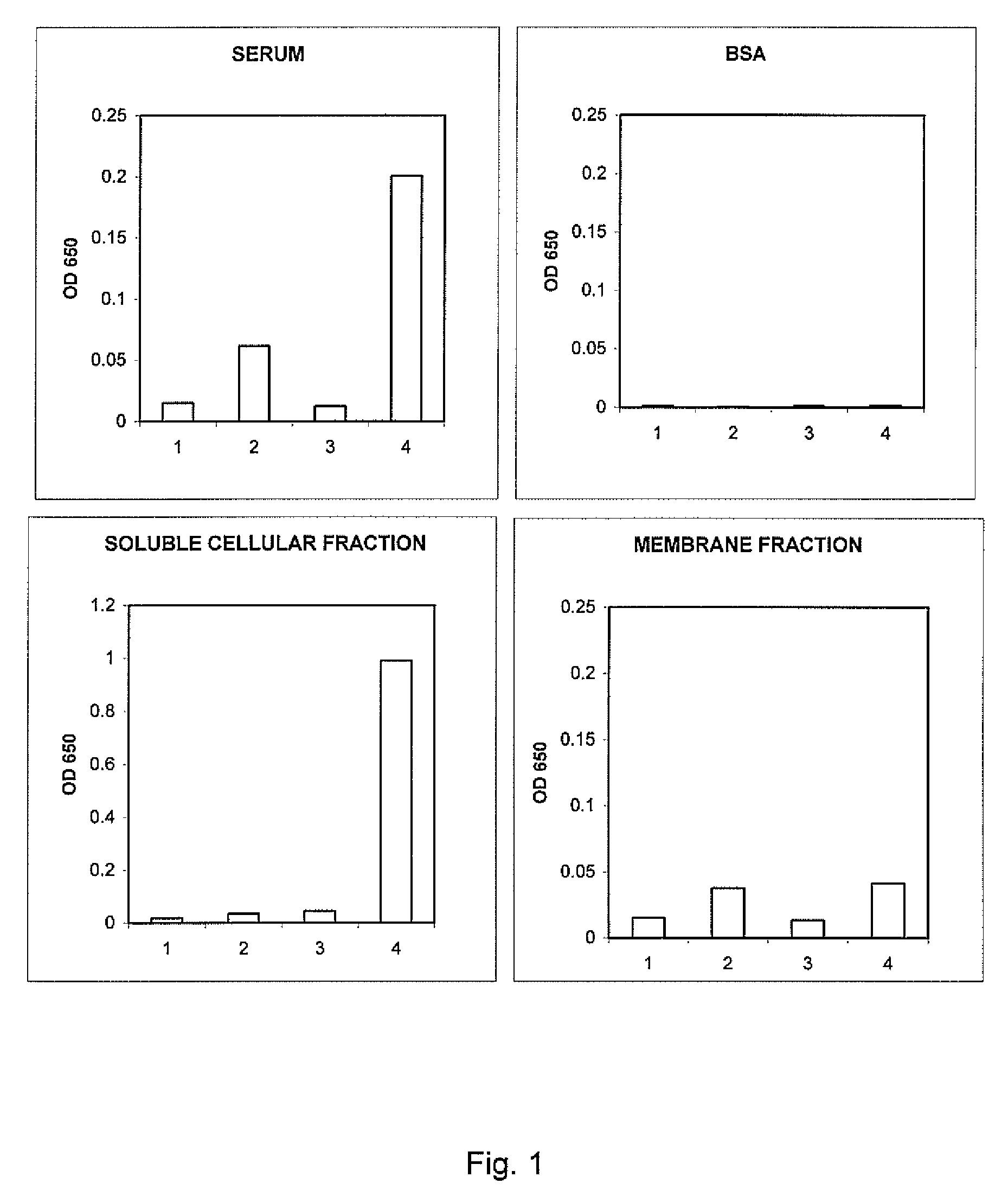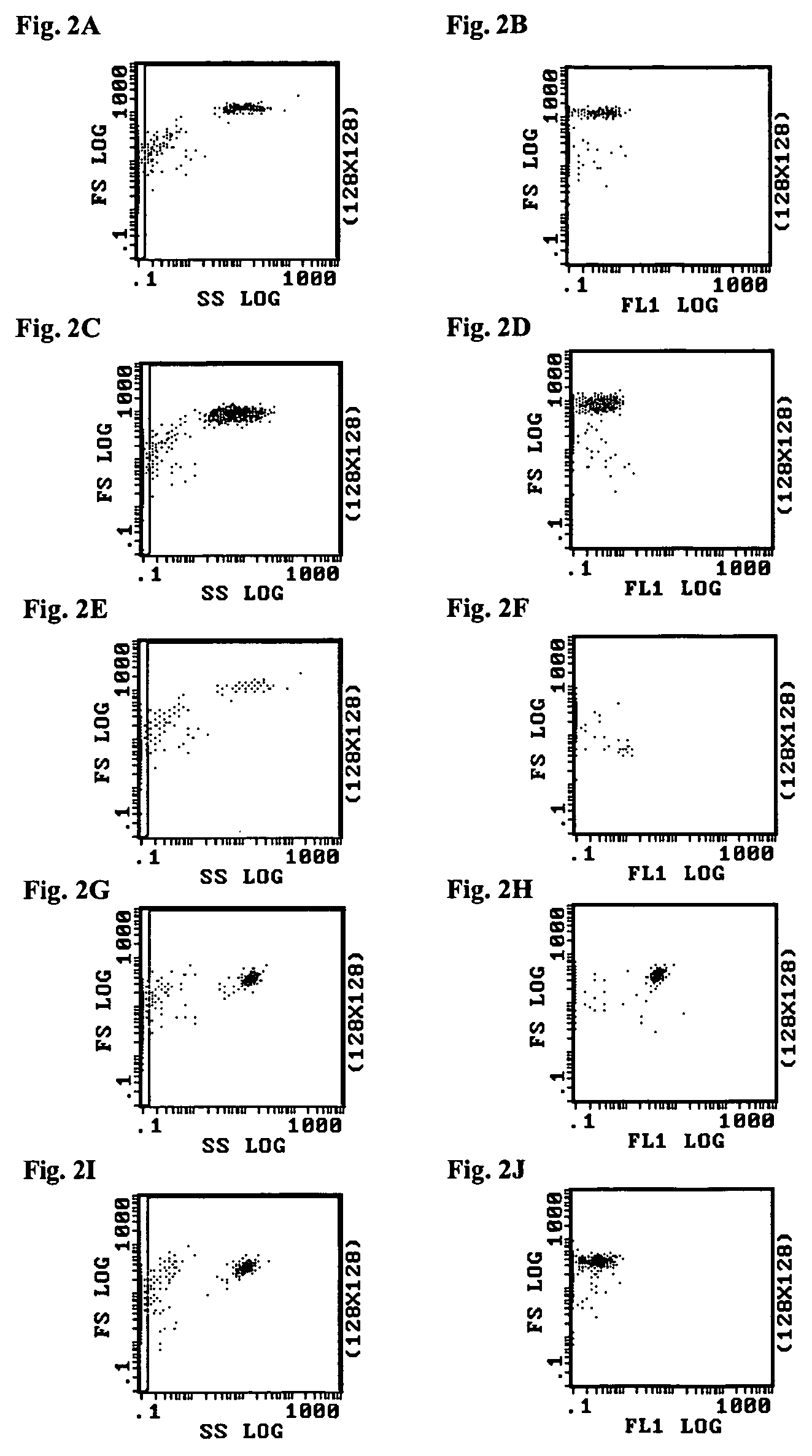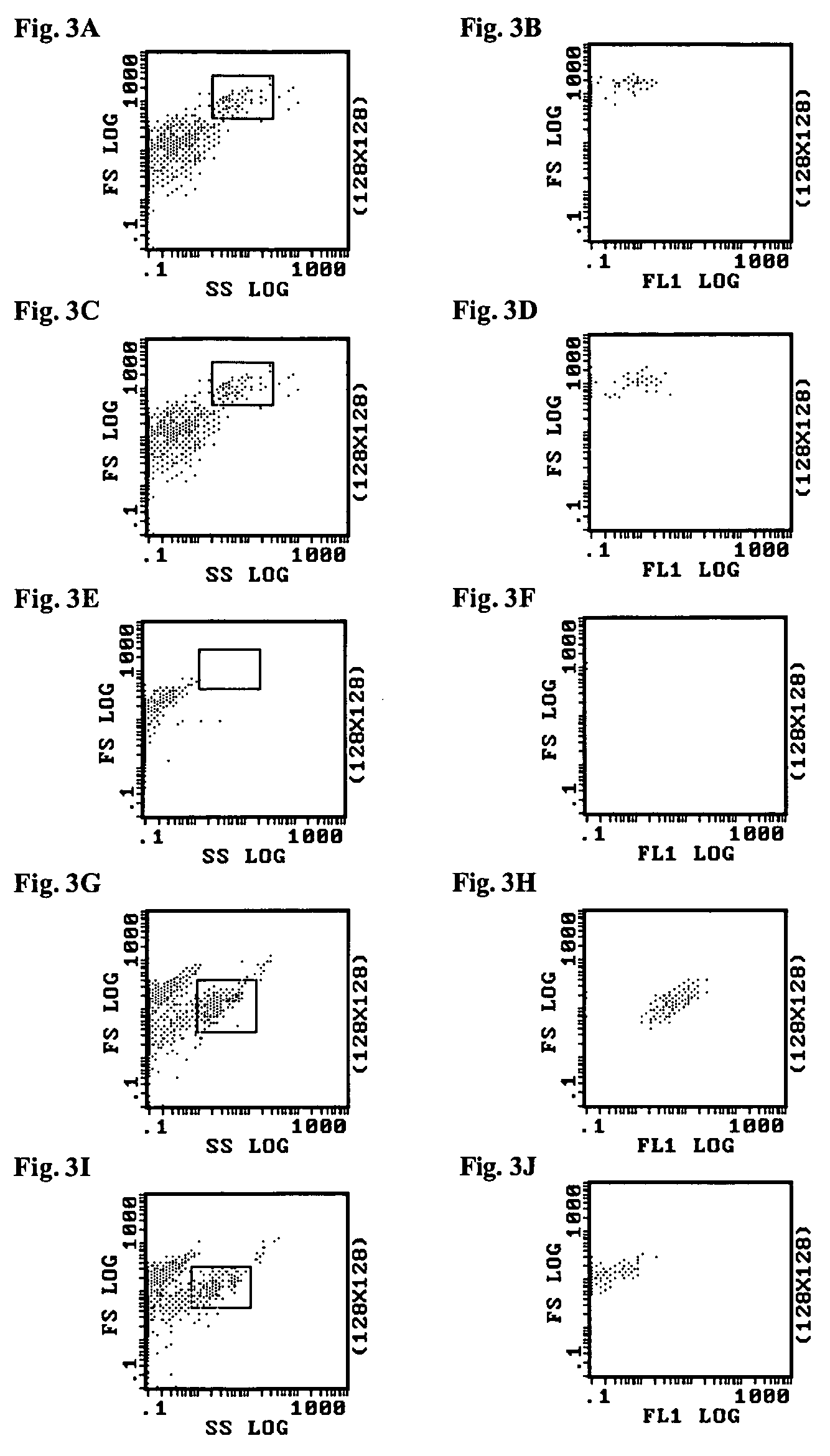Cell permeabilization and stabilization reagent and method of use
a cell permeabilization and stabilization technology, applied in the field of cell permeabilization and stabilization reagents, can solve the problems of many antigen sites being destroyed by fixation methods, not generally stabilizing the cell morphology, and loss of cell morphology, so as to improve the permeability of the cellular membrane and stabilize the surfactan
- Summary
- Abstract
- Description
- Claims
- Application Information
AI Technical Summary
Benefits of technology
Problems solved by technology
Method used
Image
Examples
example 1
Permeabilization Reagent Compositions
Composition A
[0063]Following permeabilization and stabilization reagent composition was prepared.
[0064]
N-lauroyl sarcosine2.3 mMPyrrolidine and HClquantity to adjust pH to 5.3
[0065]More specifically, a stock solution of N-lauroyl sarcosine was made first. 1.0 g of N-lauroyl sarcosine (Fluka) was pre-dissolved in 1.5 ml of ethanol (96%). 180 μl of pyrrolidine (Aldrich) was added into 95 ml of deionized water. Then the N-lauroyl sarcosine / ethanol solution was added into the pyrrolidine solution; the pH was adjusted to 5.6 by pyrrolidine or HCl, and the volume was adjusted to 100 ml with deionized water to form the stock solution. The total volume of the reagent is adjusted to 100 ml with deionized water. The permeabilization and stabilization reagent composition was prepared by diluting 6.25 ml of the stock solution with deionized water to 100 ml and adjusting pH to 5.3 with pyrrolidine or HCl. The Composition A had a conductivity of 0.1 mS / cm.
Comp...
example 2
Effect of pH, Surfactants and the Combination of pH and Surfactants on the Precipitation of Different Components of the Erythrocytes
[0072]A quantity of blood, treated with 0.7 mM of ethylenediamine tetraacetic acid (EDTA) as anticoagulant, was used to prepare blood serum. Another quantity of the EDTA treated blood was washed with phosphate buffered saline (PBS), and diluted with nine volumes of water to obtain a cell lysate. The cell lysate was subjected to centrifugation at 2000 g for 15 minutes to separate the soluble cell fraction and the membrane fraction. The pellet containing the membrane fraction was mixed with a volume of water, which contains 5% in volume of the soluble cell fraction.
[0073]Precipitation of the serum, soluble cell fraction, membrane fraction, as well as bovine serum albumin as a control, was monitored after mixing with the Composition C of Example 1, and with the following modified reagents:
[0074]1. Modified Reagent 1: Composition C of Example 1 without addi...
example 3
Effect of pH, Surfactants and of a Combination of Acidic pH and Surfactants on the Penetration of an Antibody into the Erythrocytes
[0086]0.01 ml of a whole blood was mixed with 100 μl of a saline solution and then with 2 ml of each permeabilization reagent variant as described above in Example 2. After incubation for 5 minutes, 50 μl of each mixture was added to 50 μl of a PBS solution which contained 0.2% (w / v) of bovine serum albumin and a monoclonal antibody conjugated to FITC and directed against alpha tubulin (Beckman Coulter Inc. Miami, USA). Alpha tubulin is a molecule expressed exclusively inside the cell. After incubation for 15 minutes, the mixture was mixed with 1 ml of PBS containing 0.5% of formaldehyde, to stop the reaction and fix the cells, which formed the sample mixture for analysis.
[0087]The sample mixtures were analyzed on an XL™ flow cytometer (Beckman Coulter Miami, USA). The integrity of the cells was analyzed by the forward scatter and the side scatter. The p...
PUM
| Property | Measurement | Unit |
|---|---|---|
| conductivity | aaaaa | aaaaa |
| temperature | aaaaa | aaaaa |
| conductivity | aaaaa | aaaaa |
Abstract
Description
Claims
Application Information
 Login to View More
Login to View More - R&D
- Intellectual Property
- Life Sciences
- Materials
- Tech Scout
- Unparalleled Data Quality
- Higher Quality Content
- 60% Fewer Hallucinations
Browse by: Latest US Patents, China's latest patents, Technical Efficacy Thesaurus, Application Domain, Technology Topic, Popular Technical Reports.
© 2025 PatSnap. All rights reserved.Legal|Privacy policy|Modern Slavery Act Transparency Statement|Sitemap|About US| Contact US: help@patsnap.com



